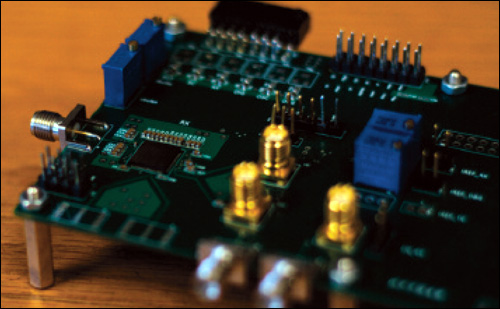Oct 27, 2014The National Aeronautics and Space Administration (NASA) would like to put low-cost sensors on space vehicles to monitor structural and environmental health. For new vehicles, the benefit would be an unprecedented level of detailed systems information; for existing vehicles, the benefit would be the ability to capture wear-and-tear information at very low cost and without a lot of crew labor.
But it would be cost-prohibitive to retrofit existing vehicles with wired sensors, and it would require too much crew time. Battery-powered wireless sensors are an option, but it wouldn't be feasible for busy astronauts to change batteries in perhaps thousands of sensors every year or so.
As NASA researchers Raymond Wagner and Richard Barton examined the issue, they realized they could greatly reduce the amount of energy required to run wireless sensors—extending battery life tremendously—by using RFID. Since passive ultrahigh-frequency tags get their energy from an RFID reader, communication could be done with no power on the sensor side. But it would be difficult to ensure the sensors were always getting power from a reader without installing lots of readers around the space vehicle.
To address that issue, the researchers proposed a novel approach in a paper that will be presented this month to the 2014 IEEE International Conference on Wireless for Space and Extreme Environments. "NASA developed delay-tolerant network (DTN) principles to make disruption-prone links—say, from an Earth station to the surface of Mars—more stable," Wagner says. "We're applying the same principles to RFID to deal with the fact that a reader might not always be present to provide energy to the sensor for transmitting data."
The DTN communication protocol, now being standardized, involves one node in a network accepting and taking custody of a bundle of data, then passing it to the next node when possible. Some mesh networks do this today, but they don't always do so reliably unless they're DTN-enabled, and they require power to transmit bundles of information from one node to the next.
In the case of a sensor connected to a standard passive UHF RFID tag, the idea is that the sensor would use its battery power only for collecting data. Wagner and Barton say sensors could also harvest energy from the Sun or some other ambient source to capture sensory data. Either way, the sensor would write the data captured directly into nonvolatile RFID tag user memory. The sensor would also indicate how much data has been stored on the transponder.
When a reader interrogates the RFID tag, the transponder would tell the reader how much data is in a bundle and then transmit the data. Once the reader takes custody of the data, it would tell the tag the bundle has been received and the data can be deleted, so the sensor can write more data. This way, bundles of data can be transferred to the reader, ensuring data isn't lost even if the reader isn't always present when the sensor is collecting data. "We're trying to create a plug-and-play system for low-power sensors," Barton says. "The goal is to standardize this delay-tolerant communication system so anyone can develop a sensor and plug it into an RFID channel for communication. Innovators could create 'lick-and-stick' sensors that ideally require no intervention after they are installed."
The researchers plan to continue developing hardware to prove DTN communication between tags and readers is viable, and then formalize the protocol so it becomes part of the larger DTN standard. "The technology exists to do this today," Wagner says. "It's a question of getting RFID and sensor manufacturers to embrace a standard approach." They would like to use the International Space Station as a test bed to evaluate RFID sensors for vehicle retrofits.

